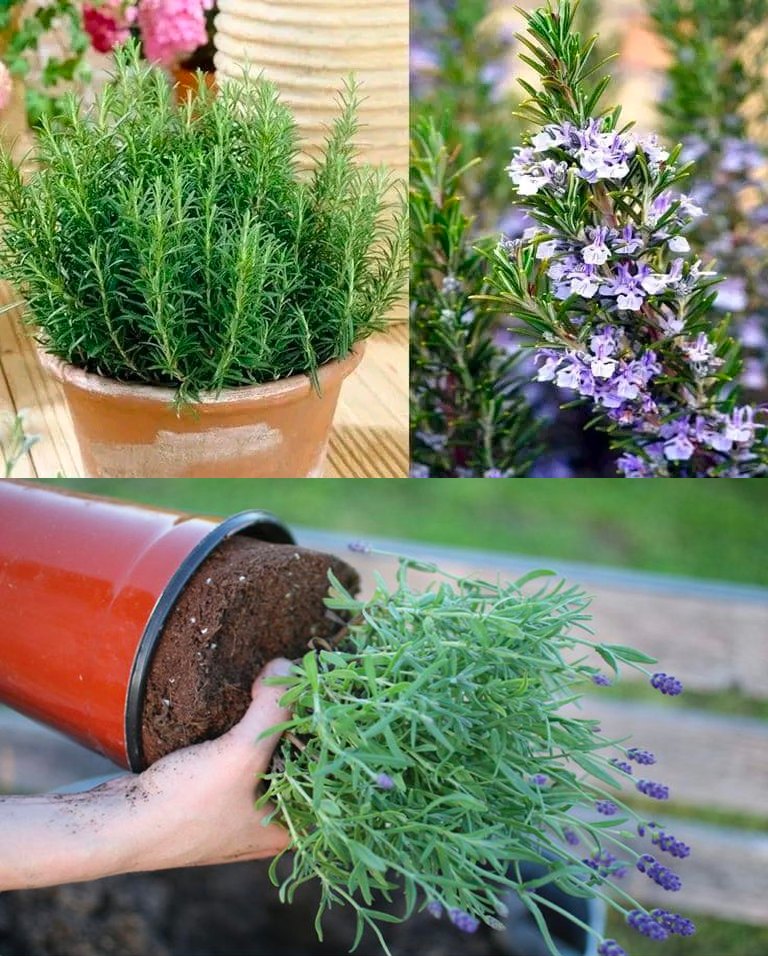
Rosemary (Rosmarinus officinalis) is a versatile and aromatic herb that can add both beauty and functionality to your garden. One creative way to incorporate rosemary into your landscape is by growing a rosemary hedge. In this article, we will explore the steps to successfully grow a rosemary hedge and delve into ten compelling reasons why you should consider adding this fragrant and beneficial plant to your outdoor space.
1. Choose the Right Location:

Select a location for your rosemary hedge that receives at least six to eight hours of direct sunlight daily. Rosemary thrives in well-draining soil, so ensure the area has good drainage to prevent waterlogged roots.
2. Prepare the Soil:

Before planting, amend the soil with organic matter like compost to improve its fertility and drainage. Remove any weeds or grass from the planting area.
3. Select Rosemary Varieties:

Choose rosemary varieties that are suitable for hedging, such as “Tuscan Blue,” “Arp,” or “Prostrate” rosemary. These varieties have a compact growth habit and can be easily shaped into a hedge.
4. Planting:

Dig a trench that is twice the width of the root ball and slightly deeper. Space the rosemary plants around 12 to 18 inches apart, depending on the desired density of your hedge. Gently place the plants in the trench, ensuring that the top of the root ball is level with the soil surface. Backfill the trench and firm the soil around the plants.
5. Watering:
After planting, water the rosemary hedge thoroughly and maintain consistent moisture for the first few weeks until the plants establish their root systems. Once established, rosemary is relatively drought-tolerant and requires watering only when the soil feels dry to the touch.
6. Pruning and Shaping:

Regular pruning is essential for maintaining the shape and density of the rosemary hedge. Prune the plants in early spring before new growth emerges and trim lightly throughout the growing season to encourage bushiness. Avoid cutting back into old wood, as rosemary has limited ability to regenerate from old growth.
4 Reasons Why It’s Worth Growing :
Fragrance and Aesthetic Appeal:

A rosemary hedge provides a fragrant and visually appealing addition to your garden. The aromatic scent of rosemary can uplift your spirits and create a pleasant atmosphere. Its dense foliage and evergreen nature offer year-round beauty and privacy.
Culinary Delights:

Having a rosemary hedge means you have a readily available source of fresh herbs for your culinary endeavors. Rosemary is a versatile herb that adds flavor and aroma to a wide range of dishes, including roasted vegetables, grilled meats, and savory bread.
Pollinator Haven:
Rosemary produces delicate, blue-purple flowers that attract bees, butterflies, and other pollinators to your garden. By growing a rosemary hedge, you contribute to supporting the local ecosystem and promoting biodiversity.
Medicinal and Health Benefits:

Rosemary is renowned for its medicinal properties and numerous health benefits. It contains antioxidants and compounds that have anti-inflammatory, antimicrobial, and cognitive-enhancing effects. Inhaling the scent of rosemary can also improve mood and mental clarity.
Growing a rosemary hedge not only adds aesthetic appeal to your garden but also offers culinary delights, attracts pollinators, and provides health benefits. With proper care and pruning, your rosemary hedge will flourish and become a delightful feature of your outdoor space. So, grab your gardening tools and embark on this fragrant journey of growing a rosemary hedge.
